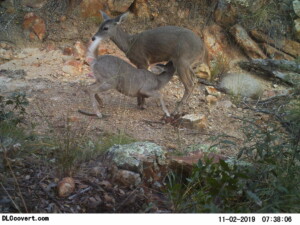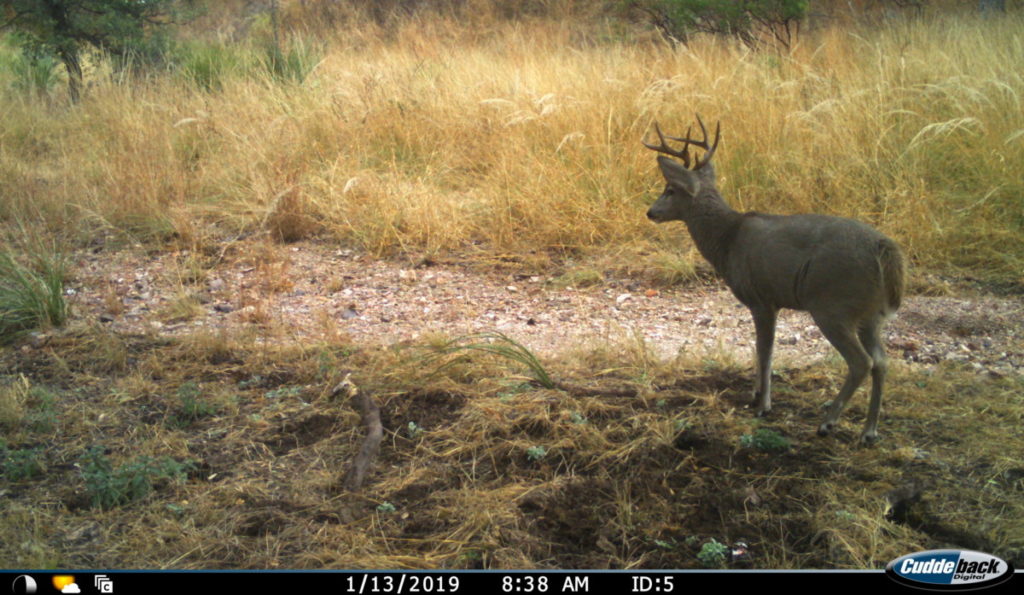The white-tailed deer (Odocoileus virginianus) is native all the way from Southern Canada to Central America. They thrive in many habitat types including, mountains, swamps, shrublands, and rainforests. In all these ecosystems, the deer prefer dense thickets for cover, with open grassy edges for food.
In the Southwest white-tailed deer can be found at higher elevations, between 3,500 to 9,000 feet in the Madrean oak woodlands and ponderosa pine forests.

Doe and fawn nursing
White-tailed deer have tawny colored coats in the summer that fade to a dusty gray in the winter help them camouflage with their surroundings. A distinguishing feature of white-tailed deer is their long tail, with fluffy white fur beneath that flashes when they run. In Arizona, they are similar looking to mule deer, but white-tailed deer can be distinguished by the tail, a white band above the nose, and the size of the animal.
In the Sky Island Region, we have the Coues subspecies of white-tailed deer. They are the smallest subspecies of white-tail deer, with males weighing 125 lbs. on average. Compared to mule deer the Coues white-tail deer is much smaller when side by side. Another way to tell them apart is by the antlers. White-tail bucks have antlers whose tips come off the main beam. Compared to the mule deer whose antlers branch at the tips like a tree.
Still confused about the differences: here is a great web page going over the differences https://coloradooutdoorsmag.com/2015/03/18/a-quick-guide-to-differentiate-mule-deer-from-white-tailed-deer/
Sources


